Life with pets brings joy in countless forms—tail wags, gentle purrs, and everyday moments that make us smile. But it can also bring the unexpected. Few things are more alarming than hearing your pet may need emergency surgery for a gastrointestinal (GI) blockage. At Alpine Animal Hospital in Pocatello, Idaho, we understand how overwhelming and frightening this news can be.
If you’re reading this, you may be facing that uncertainty—and you’re not alone. We’re here to walk you through the entire process with clarity, compassion, and expert care. In this guide, we’ll explain what GI blockages are, why they happen, what warning signs to look for, and how we help your pet recover after surgery.
What Is a Gastrointestinal Blockage?
A gastrointestinal (GI) blockage occurs when something obstructs your pet’s digestive tract, preventing normal passage of food, fluids, and waste. The blockage might be partial or complete, and it commonly occurs in the stomach or intestines.
To picture it, imagine a kink in a garden hose—nothing can flow through properly. In your pet’s case, this means pain, nausea, and potentially life-threatening complications if left untreated.
What Causes GI Blockages?
Some pets just can’t resist chewing—or swallowing—things they shouldn’t. Common causes include:
- Foreign object ingestion (toys, socks, rocks, string)
- Dietary indiscretion, like eating trash or table scraps
- Intussusception, where one section of the intestine slides into another like a telescope
- Tumors or polyps in the GI tract
- Scarring or strictures from previous inflammation or surgery
Puppies and young dogs are particularly prone to these issues due to their curious nature, but it can happen at any age.
For a deeper dive into everyday dangers, check out Don’t Chew On This!.
Why GI Blockages Are a Medical Emergency
GI blockages are more than an inconvenience—they’re a race against time. Left untreated, they can lead to:
- Severe dehydration and electrolyte imbalances
- Intestinal perforation, which can cause life-threatening infections (peritonitis)
- Sepsis, or widespread bacterial infection
- Intense, unrelenting pain
That’s why we urge pet owners to seek care right away if something seems off. Fast action saves lives.
Symptoms to Watch For
You know your pet best—so if something feels “off,” trust your instincts. Some warning signs include:
- Vomiting (especially repeated or projectile)
- Loss of appetite
- Lethargy or hiding behavior
- Abdominal pain (your pet may vocalize or avoid touch)
- Straining to defecate or producing very little stool
- Bloating or visible abdominal swelling
Some signs are subtle at first, but they can progress rapidly. A call to your vet can help determine whether your pet needs urgent care.
What Happens If a Blockage Is Left Untreated?
GI blockages don’t get better on their own—and time is critical. Here’s how a blockage typically progresses:
- Early stage: Mild vomiting and inappetence
- Moderate: Frequent vomiting, discomfort, signs of dehydration
- Advanced: Shock, sepsis, multi-organ failure, and risk of death
If your pet is showing symptoms, contact us immediately. Early treatment means fewer complications and better outcomes.
How We Diagnose a GI Blockage
When you bring your pet to Alpine Animal Hospital, we perform a full evaluation that may include:
- Physical exam to feel for discomfort or swelling
- X-rays to detect gas patterns or swallowed items
- Ultrasound to view soft tissue obstructions or telescoping intestines
- Blood work to assess hydration, electrolyte levels, and signs of infection
- Endoscopy in some cases, to visualize and possibly remove an object
For a deeper look at veterinary diagnostics, visit ACVS: Gastrointestinal Foreign Bodies.
Treatment Options: When Surgery Is Necessary
While some mild blockages may resolve with supportive care, many require surgery to prevent serious harm.
Medical Management
This might include:
- IV fluids to correct dehydration
- Anti-nausea medications
- Pain relief
- Close monitoring for signs of improvement or deterioration
Surgical Intervention
When surgery is needed, we typically perform:
- Gastrotomy: Opening the stomach to remove an object
- Enterotomy: Opening the intestines to relieve the blockage
- Resection and anastomosis: Removing a damaged intestinal section and reconnecting healthy tissue
It sounds daunting—we know. But rest assured, our experienced surgical team handles these procedures regularly with careful planning and attentive post-op care. For a walk-through of what exploratory surgery entails, visit Exploratory Surgery in Pets.
Recovery: What Happens After Surgery?
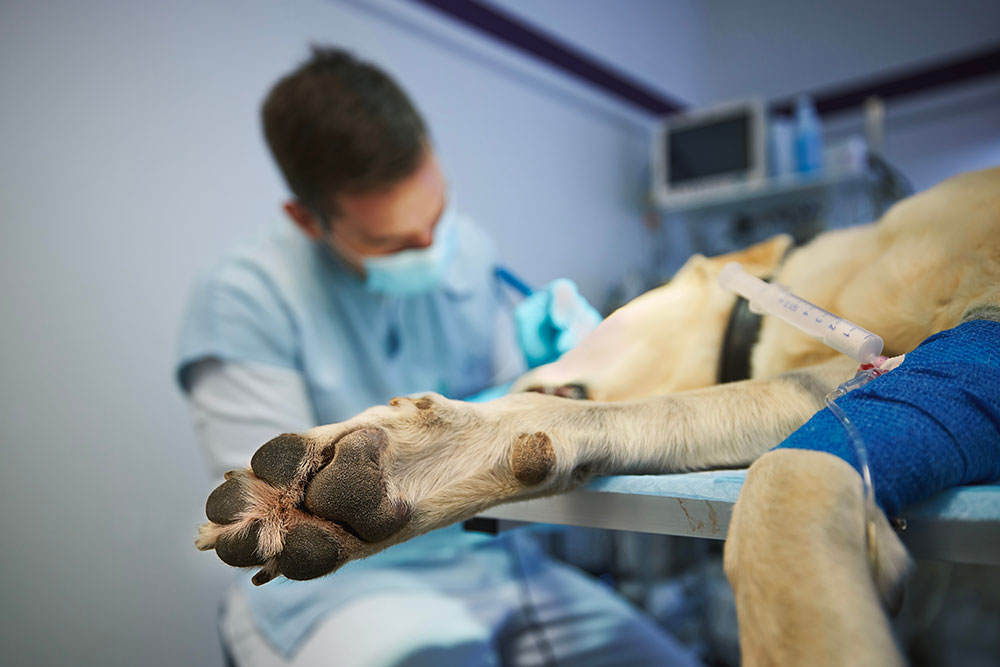
The days after surgery can feel nerve-wracking. We’ll walk you through exactly what to expect and how to help your pet heal.
Post-Operative Support
- Pain management
- Antibiotics (if infection is a risk)
- Monitoring for signs of complications like vomiting, swelling, or lethargy
At-Home Care
- Limit activity to prevent strain on the surgical site
- Feed a bland, easily digestible diet (we’ll guide you)
- Keep incisions clean and dry
- Use the E-Collar to prevent access to the incisions
- Offer reassurance—many pets are clingy or anxious during recovery
We’re only a phone call away during your pet’s healing process.
How to Prevent Future Blockages
While not every case is avoidable, there’s a lot you can do to reduce your pet’s risk:
- Pet-proof your home: Learn how at Essential Tips for Pet-Proofing Your Home
- Choose safe toys: Avoid items that can splinter or be swallowed
- Supervise play and chewing: Especially for young or anxious pets
- Skip risky treats: Bones, rawhides, and fatty leftovers are common culprits
- Behavioral training: Curb chewing habits early. Teach “Drop it”.
What to Bring to Your Appointment
Preparing ahead can help us help your pet more quickly. Be sure to bring:
- A list of symptoms and when they began, with photos or videos if possible
- Medications your pet is currently taking
- Questions—we welcome them!
Frequently Asked Questions
How quickly can a GI blockage become life-threatening?
A full blockage can become critical in as little as 24–48 hours. The sooner we act, the better the prognosis. Read more from Cornell University.
What’s the recovery time after surgery?
Most pets recover within 10–14 days with proper care. We’ll give you a personalized recovery plan.
Can a GI blockage pass on its own?
Sometimes—but not always. Small, smooth objects may pass, but many do not. It’s always safest to have your vet assess the situation.
You’re Not Alone—We’re Here to Help
We understand how overwhelming this experience can be. If you’re facing a possible GI blockage, please know we’re here to answer every question, ease every fear, and provide the best care possible.
If you notice symptoms or just need peace of mind, reach out to our team. At Alpine Animal Hospital, we’re not just treating a condition—we’re caring for your whole family.



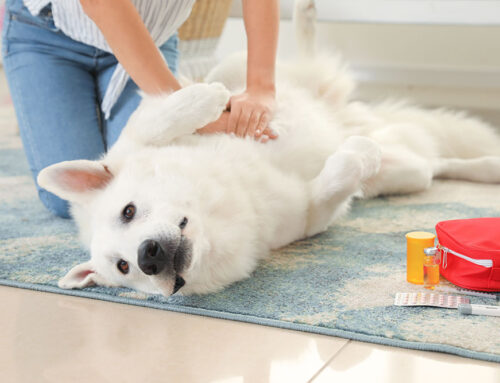
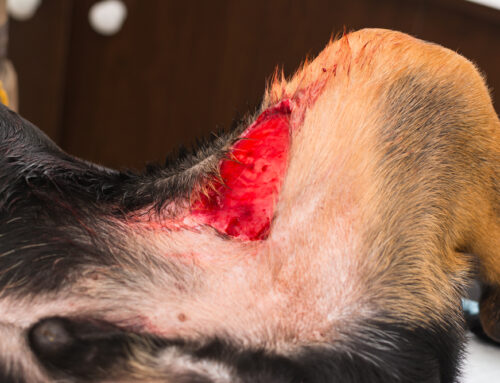
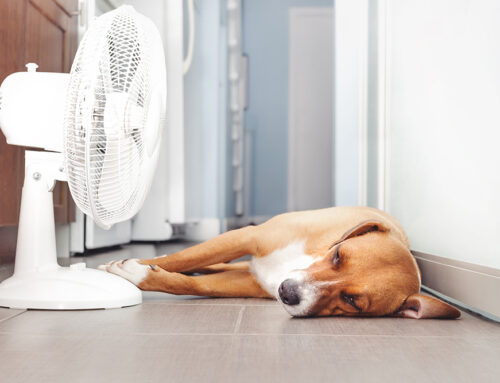
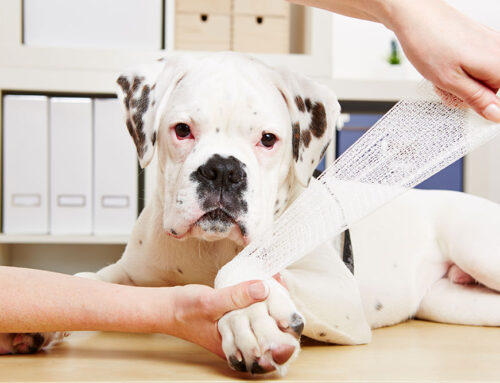
Leave A Comment